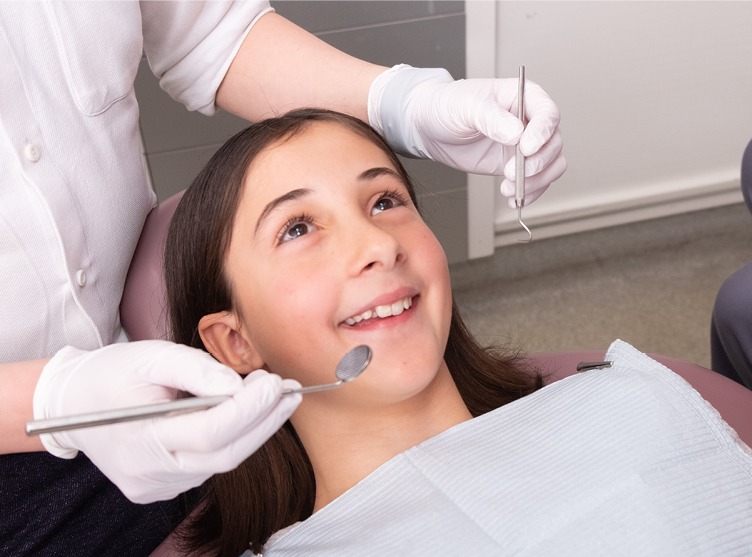Things about Legacy Orthodontics
Things about Legacy Orthodontics
Blog Article
Fascination About Legacy Orthodontics
Table of ContentsThe 5-Second Trick For Legacy OrthodonticsGetting My Legacy Orthodontics To WorkSee This Report about Legacy OrthodonticsSome Known Incorrect Statements About Legacy Orthodontics Legacy Orthodontics Things To Know Before You Buy
In addition, we supply adjustable therapy schedules, versatile payment choices and a fun, pleasurable experience.An orthodontist is a dental practitioner trained to diagnose, avoid, and treat teeth and jaw abnormalities. They remedy existing problems and are educated to identify issues that might develop in the future. Orthodontists collaborate with individuals of any ages, from youngsters to adults. People typically associate a perfect smile with healthiness.
Malocclusion, or misaligned teeth, can lead to oral problems, consisting of tooth decay, periodontal disease, and difficult or painful eating. But not everyone is born with straight teeth. If you have a negative bite or big rooms in between your teeth, you may want to consult a dentist concentrating on orthodontic treatment.
More About Legacy Orthodontics
( Image Credit Rating: DigitalVision/Getty Images) Orthodontists make use of taken care of and removable oral devices, like braces, retainers, and bands, to change the setting of teeth in your mouth. Orthodontic therapy is for dental irregularities, including: Crooked teethBite issues, like an overbite or an underbiteCrowded teeth or teeth that are too much apartJaw misalignmentThe goal of orthodontic therapy is to improve your bite.
A healthy bite ensures you can eat, chew, and talk correctly. While you may think about orthodontists as primarily for kids or teenagers who need braces, they can remedy oral issues at any type of age. Orthodontists attend college, dental college, and orthodontic school. After graduation, they invest 2 or 3 years in an orthodontic residency program.
, yet not all dentists are orthodontists. They focus on two locations: How to effectively and securely move teeth Just how to appropriately guide advancement in the teeth, jaw, and faceOnce an orthodontist has finished training, they have the choice to come to be board certified.
The 8-Minute Rule for Legacy Orthodontics
Misalignment, or malocclusion, is the most typical factor individuals see an orthodontist. It is genetic and is the result of dimension distinctions in between the upper and reduced jaw or between the jaw and teeth. Malocclusion brings about tooth congestion, an askew jaw, or uneven bite patterns. Malocclusion is usually treated with: Your orthodontist attaches metal, ceramic, or plastic square bonds to your teeth.
If you have just minor malocclusion, you may have the ability to make use of clear dental braces, called aligners, rather than standard dental braces (https://padlet.com/brianmccune20176/legacy-orthodontics-oaq8ob5ieez4famy). Some people need a headgear to aid relocate teeth into line with stress from outside the mouth. After braces or aligners, you'll require to use a retainer. A retainer is a custom device that keeps your teeth in position.
They can produce additional area in the mouth without having to right here draw teeth. Orthodontists use wires, medical screws, or plates to support your jaw bone.
You might need to see an orthodontist if you have: Crowding or not sufficient area for all of your teethOverbite, when your upper teeth come over your base teethUnderbite, when your base teeth are too far forwardSpacing or concerns with gapsCrossbite, which is when your top teeth fit behind your bottom teeth when your mouth is closedOpen bite or a vertical void between your front base and top teethMisplaced midline, when the center of your bottom and upper teeth don't align Fixing a dental malocclusion can: Make biting, eating, and talking easierImprove the proportion of our face and your overall appearanceEase pain from temporomandibular joint disordersDifferent your teeth and make them simpler to clean, assisting prevent dental cavity or dental caries It's often a dental practitioner who first notices misaligned teeth throughout a regular test.
Some Known Incorrect Statements About Legacy Orthodontics

During your very first orthodontic assessment, you'll likely have: An oral examPhotos taken of your face and smileDental X-raysPanoramic (360 level) X-rays of your face and headImpressions to produce mold and mildews of your teethThese examinations will certainly assist your orthodontist know just how to wage your treatment. braces. An orthodontist is a dentist who's had training to treat your teeth and jaw
An orthodontist is focused on your bite, so something like a damaged tooth would be handled by a dental expert. Orthodontists are concentrated on your bite, or the method your teeth fit together, and the straightness of your teeth.
Ever before asked yourself just how stars constantly seem to have flawlessly straightened teeth? Orthodontists are oral specialists that concentrate on remedying abnormalities in the teeth and jaws.
Not known Facts About Legacy Orthodontics

, orthodontists have a diverse toolkit at their disposal. These tried-and-true dental braces make use of a system of braces bound to the teeth and connected by wires.
These removable trays are tailor-made to gradually change the teeth's placement. In situations of narrow jaws, palatal expanders can be used to develop space for appropriate tooth alignment.
Report this page